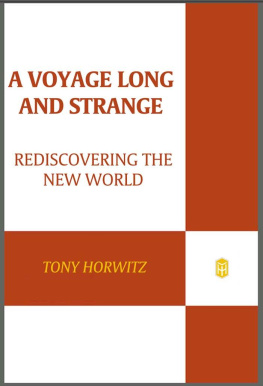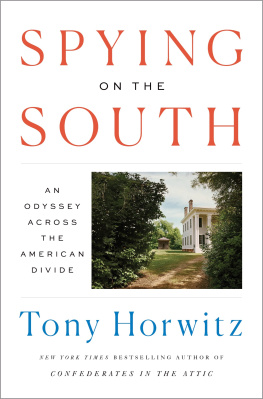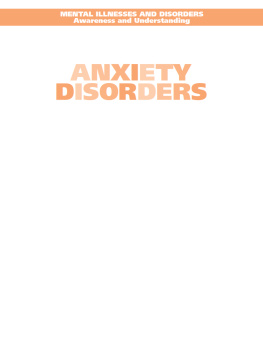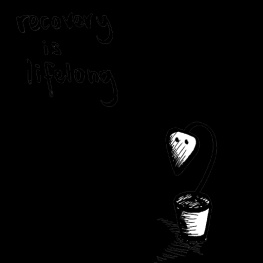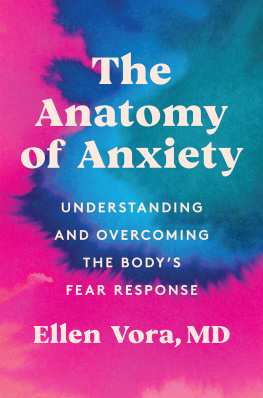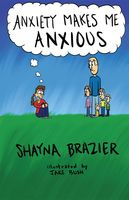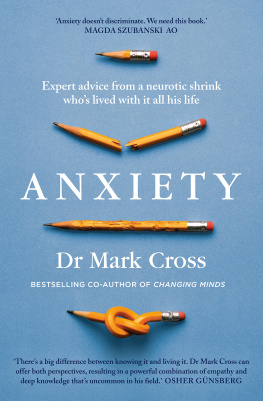ANXIETY
JOHNS HOPKINS BIOGRAPHIES OF DISEASE
Charles E. Rosenberg, Series Editor
Randall M. Packard, The Making of a Tropical Disease:
A Short History of Malaria
Steven J. Peitzman, Dropsy, Dialysis, Transplant:
A Short History of Failing Kidneys
David Healy, Mania: A Short History of Bipolar Disorder
Susan D. Jones, Death in a Small Package:
A Short History of Anthrax
Allan V. Horwitz, Anxiety: A Short History
ANXIETY
A Short History
Allan V. Horwitz

2013 The Johns Hopkins University Press
All rights reserved. Published 2013
Printed in the United States of America on acid-free paper
2 4 6 8 9 7 5 3 1
The Johns Hopkins University Press
2715 North Charles Street
Baltimore, Maryland 21218-4363
www.press.jhu.edu
Library of Congress Cataloging-in-Publication Data
Horwitz, Allan V.
Anxiety : a short history / Allan V. Horwitz.
p. ; cm. (Johns Hopkins biographies of disease)
Includes bibliographical references and index.
ISBN-13: 978-1-4214-1080-7 (pbk. : alk. paper)
ISBN-10: 1-4214-1080-X (pbk. : alk. paper)
ISBN-13: 978-1-4214-1081-4 (electronic)
ISBN-10: 1-4214-1081-8 (electronic)
I. Title. II. Series: Johns Hopkins biographies of disease.
[DNLM: 1. Anxiety Disordershistory. 2. Anxietyhistory. WM 11.1]
RC531
616.8522dc23
2013003541
A catalog record for this book is available from the British Library.
Special discounts are available for bulk purchases of this book. For more information,
please contact Special Sales at 410-516-6936 or specialsales@press.jhu.edu.
The Johns Hopkins University Press uses environmentally friendly book materials,
including recycled text paper that is composed of at least 30 percent post-consumer waste,
whenever possible.
To Jane
FOREWORD
Disease is a fundamental aspect of the human condition. Ancient bones tell us that pathological processes are older than humankinds written records, and sickness and death still confound us. We have not banished pain, disability, or the fear of death, even though we now die on average at older ages, of chronic more often than acute ills, and in hospital or hospice beds and not in our own homes. Disease is something men and women feel. It is experienced in our bodiesbut also in our minds and emotions. It can bring pain and incapacity and hinder us at work and in meeting family responsibilities. Disease demands explanation; we think about it and we think with it. Why have I become ill? And why now? How is my body different in sickness from its quiet and unobtrusive functioning in health? Why in times of epidemic has a community been scourged?
Answers to such timeless questions necessarily mirror and incorporate time- and place-specific ideas, social assumptions, and technological options. In this sense, disease has always been a social and linguistic, a cultural as well as biological, entity. In the Hippocratic era more than two thousand years ago, physicians (we have always had them with us) were limited to the evidence of their senses in diagnosing a fever, an abnormal discharge, or seizure. Their notions of the material basis for such felt and visible symptoms necessarily reflected and incorporated contemporary philosophical and physiological notions, a speculative world of disordered humors, breath, and pathogenic local environments. Today we can call upon a rather different variety of scientific understandings and an armory of diagnostic practicestools that allow us to diagnose ailments unfelt by patients and imperceptible to the doctors unaided senses. In the past century disease has also become increasingly a bureaucratic phenomenon, as sickness has been definedand in that sense constitutedby formal disease classifications, treatment protocols, and laboratory thresholds.
Sickness is also linked to climatic and geographic factors. How and where we live and how we distribute our resources contribute to the incidence of disease. For example, ailments such as typhus fever, plague, malaria, dengue, and yellow fever reflect specific environments that we have shared with our insect contemporaries. But humankinds physical circumstances are determined in part by culture, and especially by agricultural practice in the millennia before the growth of cities and industry. What we eat and the work we do or do not doour physical as well as cultural environmentall help determine our health and longevity. Environment, demography, economic circumstances, and applied medical knowledge all interact to create particular distributions of disease at particular places and specific moments in time. The twenty-first-century ecology of sickness in the developed world is marked, for example, by the dominance of chronic and degenerative illnessesailments of the cardiovascular system, of the kidneys, and cancer.
Disease is historically as well as ecologically specific. Or perhaps I should say that every disease has a unique past. Once discerned and named, every disease claims its own history. At one level, biology creates that identity. Symptoms and epidemiology, but also generation-specific cultural values and scientific understandings, shape our responses to illness. Some writers may have romanticized tuberculosisthink of Greta Garbo as Camille but, as the distinguished medical historian Owsei Temkin noted dryly, no one ever thought to romanticize dysentery. Tuberculosis was pervasive in nineteenth-century Europe and North America and killed far more women and men than cholera did, but it never mobilized the same widespread and policy-shifting concern. It was a familiar aspect of life, to be endured if not precisely accepted. Unlike tuberculosis, cholera killed quickly and dramatically; it was never accepted as a condition of life in Europe and North America. Its episodic visits were anticipated with fear. Sporadic cases of influenza are normally invisible, indistinguishable among a variety of respiratory infections; waves of epidemic flu are all too visible. Syphilis and other sexually transmitted diseases, to cite another example, have had a peculiar and morally inflected history. Some diseases, such as smallpox and malaria, have a long history; others, like AIDS, a rather short one. Some diseases, like diabetes and cardiovascular disorders, have flourished in modern circumstances; others reflect the realities of an earlier and economically less developed world.
These arguments constitute the logic motivating and underlying the Johns Hopkins Biographies of Disease. Biography implies an identity, a chronology, and a narrativea movement in and through time. Once inscribed by name in our collective understanding of medicine and the body, each disease entity becomes a part of that collective understanding and thus inevitably shapes the way individual men and women think about their own felt symptoms and prospects for future health. Each historically visible entityeach diseasehas a distinct history, even if that history is not always defined in terms familiar to twenty-first-century physicians. The very notion of specific disease entitiesfixed and based on a defining mechanismis in itself a historical artifact. Dropsy and Brights disease are no longer terms of everyday clinical practice, but they are an unavoidable part of the history of chronic kidney disease. Nor do we speak of essential, continued, bilious, or remittent fevers; they are not meaningful designations in todays disease classifications. Fever is now a symptom, the bodys response to a triggering circumstance. It is no longer a disease, as it was through millennia of human history. Flux, or diarrhea, is similarly no longer a disease but a symptom associated with a variety of specific and nonspecific causes. We have come to assume and expect a diagnosis when we feel pain or suffer incapacity; we expect the world of medicine to at once categorize, explain, and predict.
Next page

